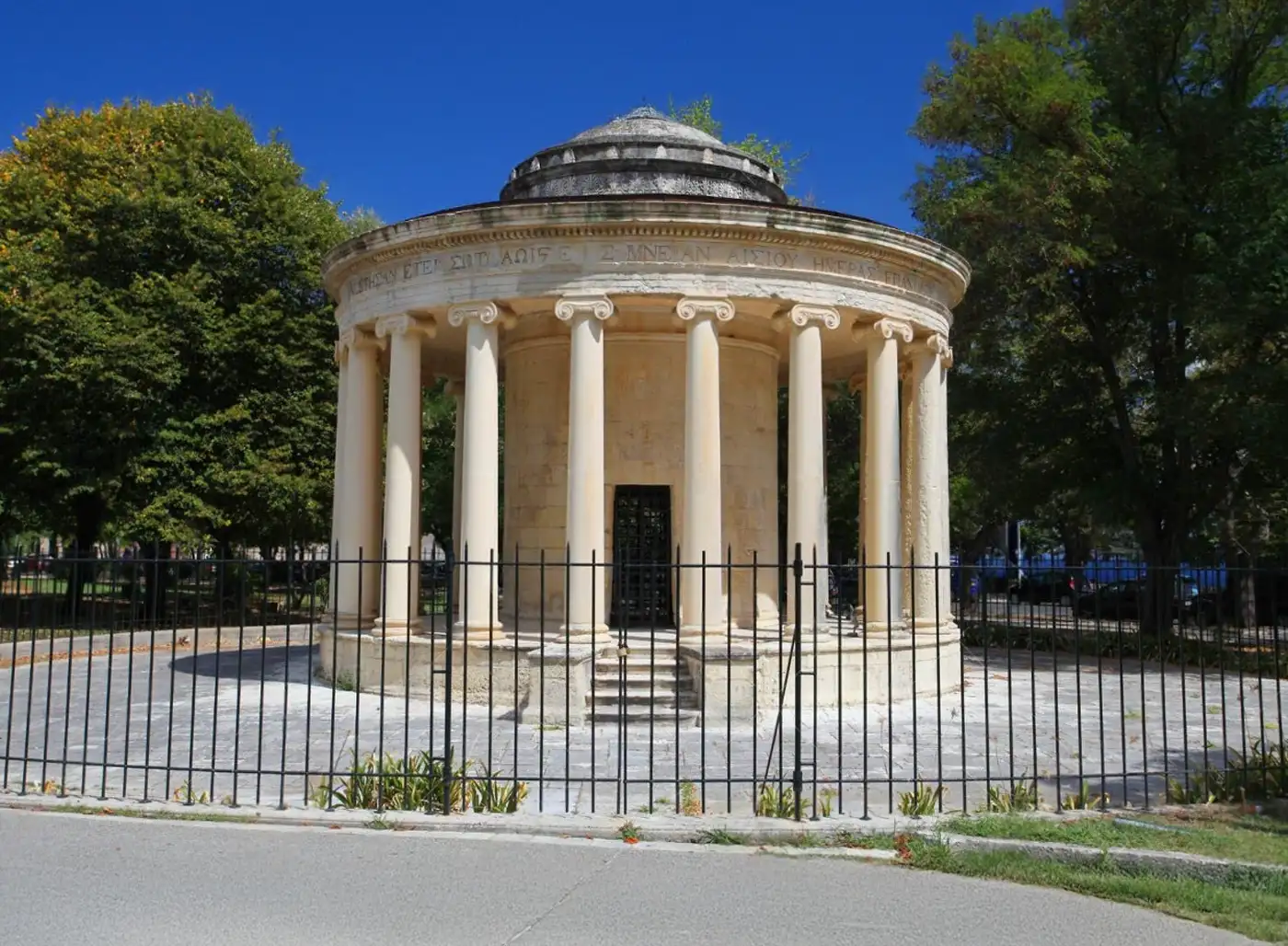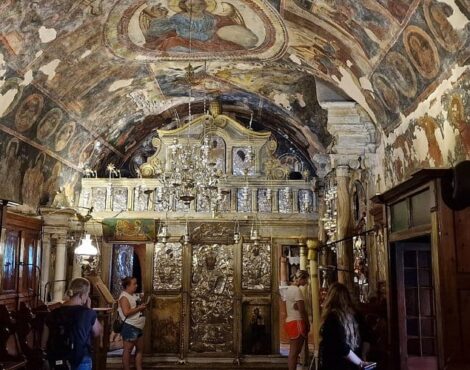The British colonial period in Corfu, spanning from 1815 to 1864, left an indelible mark on the island’s cultural and architectural landscape. Though relatively brief, this era introduced significant infrastructural and aesthetic developments, many of which continue to define Corfu’s identity today. Among the most notable legacies are the Maitland Monument, the Douglas Column, and the Church of Saint George within the Old Fortress each serving as a testament to British influence and the island’s historical evolution.
The Maitland Monument, also known as the Maitland Rotunda or the Peristyle of Maitland, stands prominently at the southern end of Spianada Square, Corfu’s expansive central plaza. Constructed in 1816, this neoclassical structure was erected in honour of Sir Thomas Maitland, the first British Lord High Commissioner of the Ionian Islands. Designed by Colonel George Whitmore of the Royal Engineers, the monument features a circular form surrounded by twenty Ionic columns, embodying the neoclassical architectural style prevalent during that period. Notably, the monument was built atop a pre-existing Venetian-era cistern, known locally as the “Sterna,” integrating functional infrastructure with commemorative architecture. The use of Maltese limestone in its construction further underscores the British colonial reach, as Malta was also under British rule at the time. Today, the Maitland Monument remains a significant historical and architectural landmark in Corfu Town.
A short distance away, at the intersection of Alexandras and Dimokratias Avenues, stands the Douglas Column, an obelisk dedicated to Sir Howard Douglas, who served as Lord High Commissioner from 1835 to 1841. Erected in 1843, the monument originally stood near the Aktaion café but was relocated in 1907 to its current position due to concerns about ground stability. The Douglas Column commemorates Douglas’s contributions to the island, including educational reforms and infrastructural improvements. Its presence along the seafront boulevard of Garitsa Bay makes it a prominent feature in the urban landscape, symbolizing the enduring impact of British administration on Corfu’s development.
Within the confines of the Old Fortress of Corfu lies the Church of Saint George, a striking example of neoclassical architecture with a distinct Doric façade. Constructed in 1840 to serve the spiritual needs of the British garrison stationed on the island, the church was designed by British military engineer Anthony Emmett. Its design, reminiscent of an ancient Greek temple, features six Doric columns supporting a triangular pediment, reflecting the British penchant for classical architectural forms. Following the union of the Ionian Islands with Greece in 1864, the church was consecrated as a Greek Orthodox place of worship. Despite this transition, the structure has retained its original architectural integrity, making it a unique fusion of British design and Greek religious tradition. Today, the Church of Saint George not only serves as a place of worship but also hosts cultural events, linking Corfu’s past with its present.
These monuments the Maitland Monument, the Douglas Obelisk, and the Church of Saint George collectively encapsulate the British legacy in Corfu. They represent a period of significant transformation, where British colonial ambitions intersected with local traditions and needs. The architectural styles introduced during this era, characterized by neoclassical elements and functional design, have become integral to Corfu’s aesthetic and cultural heritage. Moreover, these structures continue to serve as tangible reminders of the island’s complex history, attracting visitors and scholars alike who seek to understand the multifaceted influences that have shaped Corfu.
In conclusion, the British period in Corfu, though relatively short-lived, brought about substantial changes that have had a lasting impact on the island’s infrastructure, architecture, and cultural identity. The enduring presence of monuments such as the Maitland Monument, the Douglas Column, and the Church of Saint George stands as a testament to this influence, offering insights into a pivotal chapter of Corfu’s history. These structures not only commemorate notable figures and events but also embody the confluence of British and Greek heritage, enriching the island’s historical tapestry and continuing to captivate those who explore its storied landscapes.





